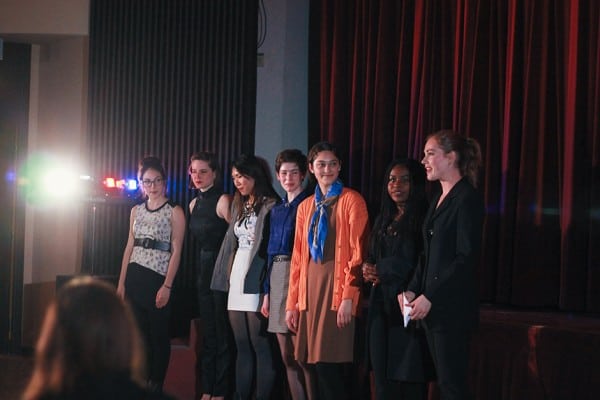The Vic Enviro Fashion Show is an annual event at Victoria College featuring original and second-hand pieces from student designers. The show promotes environmental awareness and sustainability in the world of fashion.
This year’s theme was Blade Runner, the iconic 1980s sci-fi flick. Set in a dystopian Los Angeles, Blade Runner was chosen as a theme for its portrayal of a “lived-in future,” a scenery staunchly opposed to the attractive and clean futuristic images of films like Star Wars. The Blade Runner vibe was very apparent in the feel of the show — the lighting, music, and, of course, the clothing itself.
As soon as the lights dimmed and the atmospheric music came over the speakers, the venue was transformed from a regular hall to a futuristic runway. The models, most of them first-time runway walkers, each gave off an air of confidence and experience that convinced the audience otherwise. The clothing ranged from casual everyday-wear to formal dress, and, in true Blade Runner tradition, featured an abundance of trench coats. While the clothing was predominantly wearable, some combinations appeared dramatic on the models, giving off a serious impression of haute couture.
Aside from showcasing student talent, the show had a deeper purpose: to promote eco-friendliness and sustainability in the fashion industry. “The fashion industry can be really unsustainable, with rayon made from slow-growing trees, and garments you can only wear five times before they wear out or go out of style,” says one of the event’s fashion designers, Arlie Millyard, adding, “I think there needs to be a shift in both the industry and the way we think about clothes.”
There was a very strong DIY message in the show, which was encouraging for a student who can’t mend her own socks, let alone design an entire dress. Each piece featured in the show was made from entirely repurposed materials — a mix of altered vintage pieces, thrifted ensembles, and entirely original creations. In a society where high fashion is usually reserved for those with full pockets, it was promising to be shown stylish, original alternatives that were accessible within a student budget.
Along with sustainability, a large focus of the show was affordability. “By designing my own clothing and reworking material I already had, I established my sense of self and style through clothing with little to no money. This event embodies that feeling, and that chic and fashionable does not always mean big bucks,” says Ivy Pan, one of the show’s designers.
After the show, there was a buying period in which nearly all the pieces were brought out for the public to purchase. Audience members flocked to the racks to pick out their favourites, and, of course, each piece was priced economically. “There’s a lot that goes on behind the scenes, administrative stuff,” shares head designer Elana Moore, who’s been involved with the show for four years. “It’s hectic and crazy, there are 20 models and around 10 designers. It’s a lot of work, but it’s so rewarding.”




